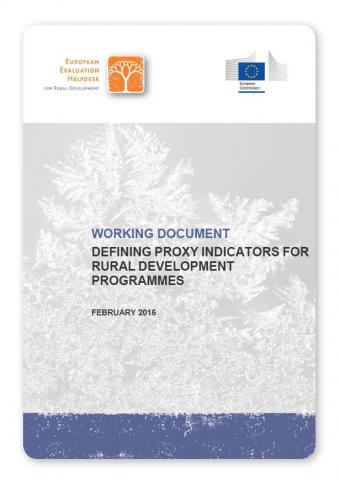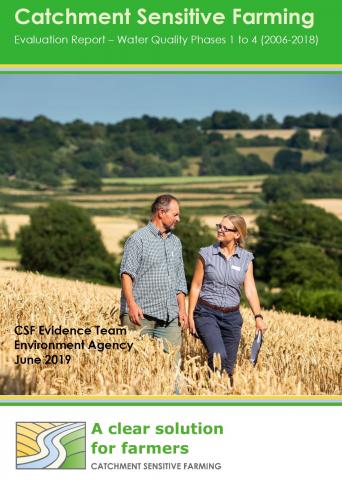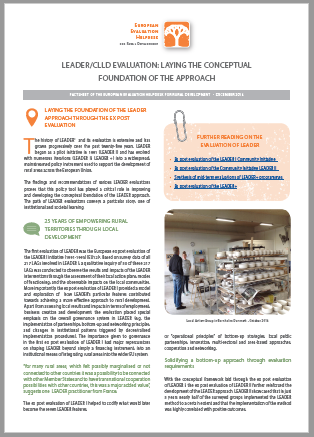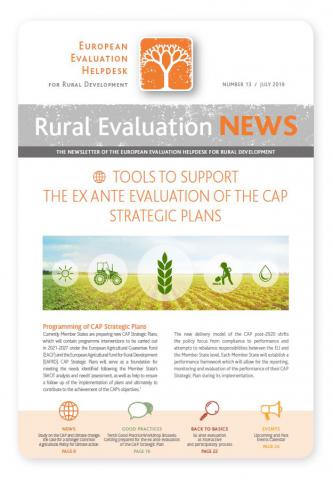
The report explores applicants’ and experts’ experiences of applications and assessment procedures, and how the applicants' projects adhered to the objectives of the scheme and those of the Scottish Government.

The report explores applicants’ and experts’ experiences of applications and assessment procedures, and how the applicants' projects adhered to the objectives of the scheme and those of the Scottish Government.

Where data for a common context indicator is not available, neither from EU nor Member State sources, an estimation of the common context indicator or a proxy indicator should be used. In this working document, a definition of a proxy indicator is presented based on the related definitions used by the European Commission, the European Environmental Agency (EEA), EuropeAid and other relevant organizations such as FAO, UNDP and OECD.

This brochure presents the main field results of the past programming period, reflects on the opinions of the presidents of Boerenbond and Natuurpunt and examines how the cooperation between farmers, Flemish Land Agency, business planners and other partners works.

Discover articles on:
Expand your knowledge of:

This report summarises a policy impact evaluation of Catchment Sensitive Farming (CSF). Model assessments of environmental outcomes are validated through analysis of water quality monitoring data and underpinned by effective farmer engagement and advice delivery, achieved through a combination of CSF Officers, commissioned contractors, and partnerships with other organisations.

The purpose of this thematic evaluation was to achieve a better assessment of C.40 and I.11 or gross nutrient balance (GNB) on agricultural land. In the case of Hungary, national balance levels often mask the share of extreme positive and negative dissolved nitrogen (DN) and dissolved phosphorus (DP) data, both of which may cause environmental risks.

The history of LEADER and its evaluation is extensive and has grown progressively over the past twenty-five years. LEADER began as a pilot initiative in 1991 (LEADER I) and has evolved with numerous iterations (LEADER II, LEADER +) into a widespread, mainstreamed policy instrument used to support the development of rural areas across the European Union.
The findings and recommendations of various LEADER evaluations proves that this policy tool has played a critical role in improving and developing the conceptual foundation of the LEADER approach. The path of LEADER evaluations conveys a particular story, one of institutional and societal learning.

The Guidelines: Assessment of RDP Results: How to Prepare for Reporting on Evaluation in 2017, is a non-binding document, which serves to complement the legal requirements relating to the AIR submitted in 2017. The document leads stakeholders through the phases of planning, preparing, conducting and reporting on evaluation for the AIRs to be submitted in 2017.
Updated fiches for Complementary Result Indicators No 13, 14, 15, 18 and 19

Discover articles on:
Expand your knowledge of:

As a continuation of the work performed in 2016, the Evaluation Helpdesk has in 2017 developed a Methodological Factsheet which was distributed to all Managing Authorities. The Methodological Factsheet has been conceptualised as a tool for the European Commission and the Member States to collect the approaches used for the HNV farming indicator in a comparable format. This working document presents the results and findings of this survey.